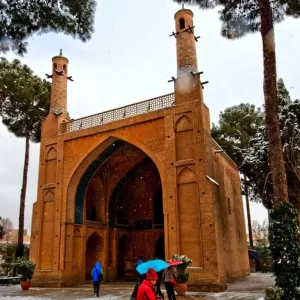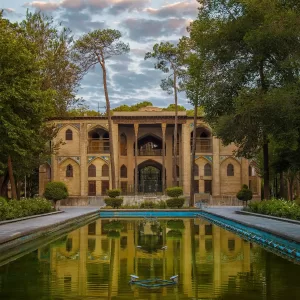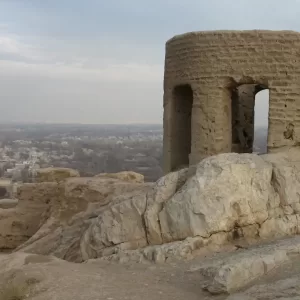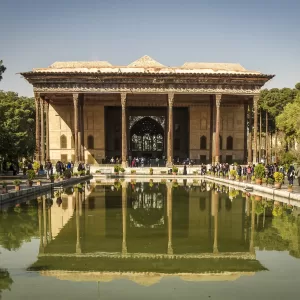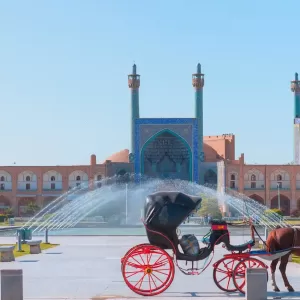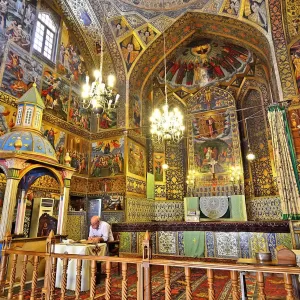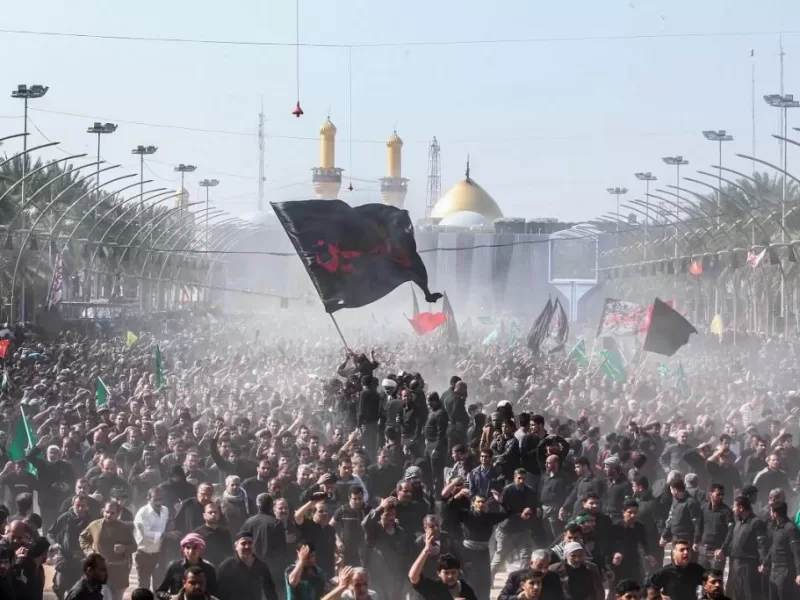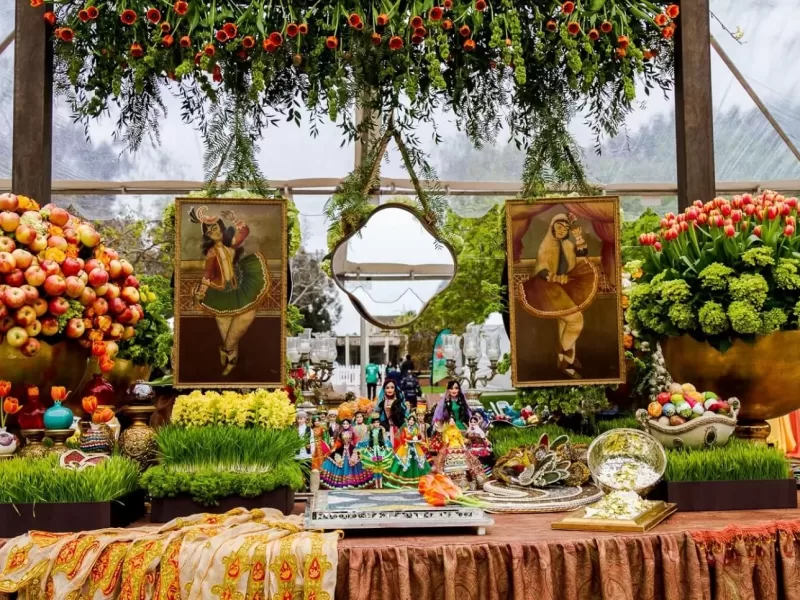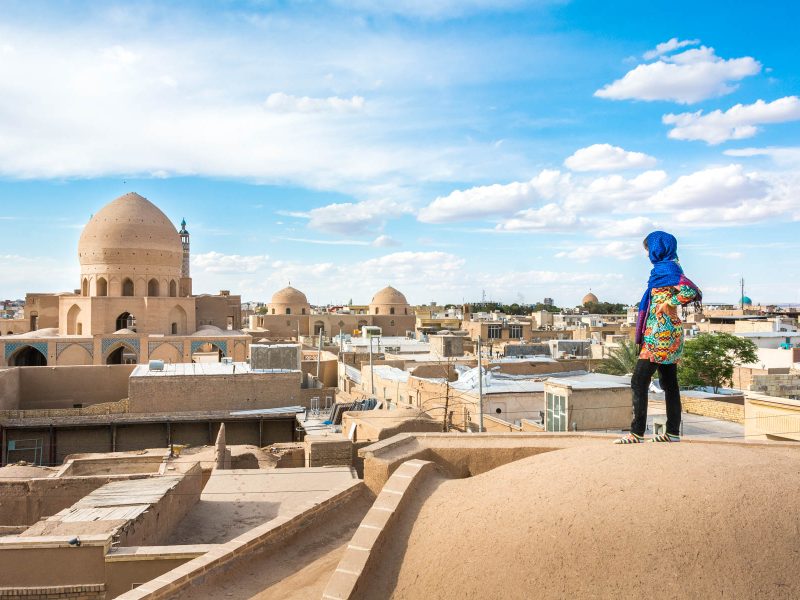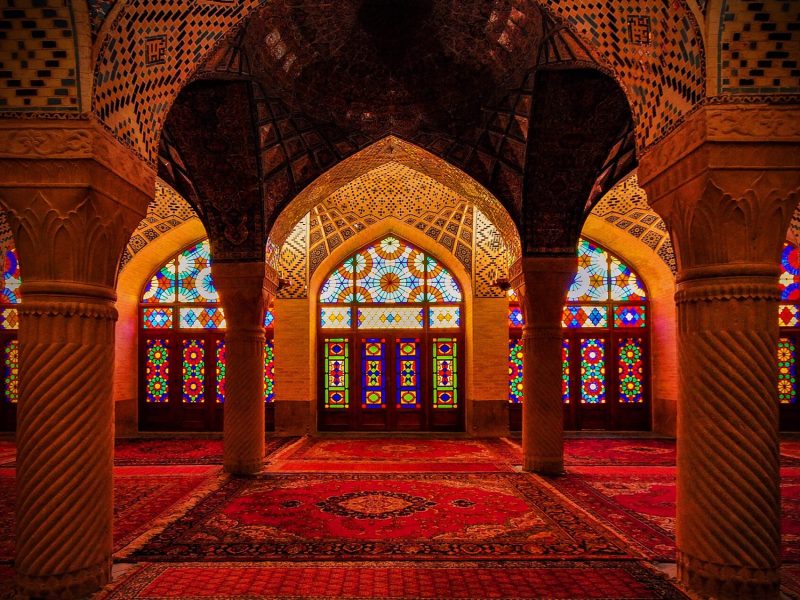Exploring the Spiritual Heart of Iran: Sheikh Lotfollah Mosque
The Sheikh Lotfollah Mosque, located in the city of Isfahan, Iran, is one of the most stunning examples of Persian Islamic architecture. Its delicate façade, intricate tilework, and serene atmosphere make it a must-see destination for anyone visiting Isfahan. Built in the early 17th century, the mosque is a testament to the opulence of the Safavid dynasty, and it remains an important cultural and spiritual center for the people of Iran to this day.
Brief Facts:
• Constructed in the early 17th century during the Safavid dynasty
• Designed as a private mosque for the women of the royal family
• Named after the Sufi saint, Sheikh Lotfollah
• Intricately decorated with tile work and calligraphy
• Remains an important religious site for the local community
• Has undergone extensive renovations in recent years to preserve its beauty and heritage
History and Significance
Sheikh Lotfollah Mosque, also known as the Ladies’ Mosque, is a 17th century mosque located in Isfahan, Iran. It was built during the Safavid dynasty and was commissioned by Shah Abbas I. The mosque was used as a private mosque for the royal court and was not open to the public. It was named after a renowned Sufi saint, Sheikh Lotfollah, who was invited to Isfahan by Shah Abbas I.
The mosque was built to serve as a symbol of the Safavid dynasty’s power and prestige, as well as to commemorate the important relationship between the Safavid monarchs and the Sufi community. It was designed as a central part of the royal palace complex, which was a key feature of the city of Isfahan.
The mosque’s location was carefully chosen, as it was situated near the Royal Palace and close to the main road that led to the palace. This was intended to be a symbol of the close relationship between the monarchy and the Sufi community.
Art and Architecture
The mosque is renowned for its unique and intricate architectural style, which was heavily influenced by Persian and Islamic architecture. The mosque’s interior is covered in beautiful tilework, with intricate patterns and designs that showcase the skill and creativity of the artists who created them.
One of the most notable features of the mosque is its dome, which is covered in blue tiles and is said to be one of the largest dome structures in the world. The dome is supported by four arches, which are decorated with intricate carvings and reliefs.
The mosque’s entrance is also notable for its beautiful tilework, which features a series of inscriptions in Arabic that are surrounded by intricate geometric designs. The entrance is designed to be a welcoming and inviting space, with a large courtyard that opens up to the mosque’s main prayer hall.
Overall, the art and architecture of Sheikh Lotfollah Mosque serves as a testament to the beauty and creativity of the Safavid dynasty and its contributions to the world of art and architecture. The mosque continues to be an important cultural and historical landmark, attracting visitors from all over the world who are interested in learning more about the rich history and culture of Iran.
Interior Decorations
• Intricate tile work covering the entire interior walls, including beautiful blue and white tiles with gold accents
• Elaborate calligraphy, including verses from the Quran, gracing the walls and dome of the mosque
• Unique dome structure with a central oculus, allowing light to pour into the mosque, creating a peaceful atmosphere
Location and Accessibility
The Sheikh Lotfollah Mosque is located in the heart of Isfahan’s historic district, near the city’s famous Naqsh-e Jahan Square. The mosque is easily accessible by foot, and visitors are welcome to enter and explore its peaceful interior.
Best Time to Visit
The best time to visit the Sheikh Lotfollah Mosque is in the early morning or late afternoon, when the light is soft and the mosque is less crowded. Visitors are also encouraged to visit during the evenings, when the mosque is illuminated and its beauty is on full display.
UNESCO Site
The Sheikh Lotfollah Mosque is part of the larger Naqsh-e Jahan Square complex, which has been designated a UNESCO World Heritage site. The complex, which includes several other important historical and cultural sites, is considered one of the most important examples of Persian Islamic architecture in the world.
Religious Significance
• Sheikh Lotfollah Mosque served as a private place of worship for the women of the royal family and was used for more personal and intimate religious ceremonies
• It remains an important religious site for the local community, attracting both worshippers and tourists alike
Conservation and Restoration Efforts
• Efforts have been made over the years to conserve and restore the mosque, preserving its intricate details and beauty for future generations
• In recent years, the mosque has undergone extensive renovations to repair any damage and reinforce its structural integrity
Contemporary Significance
• The mosque continues to be an important symbol of Persian history and culture, inspiring poets, artists, and writers to this day
• It remains a popular tourist destination, attracting visitors from all over the world to experience its beauty and spirituality
FAQs
- What is the Sheikh Lotfollah Mosque?
The Sheikh Lotfollah Mosque is a stunning example of Persian Islamic architecture, located in the city of Isfahan, Iran. - When was the mosque built?
The mosque was built in the early 17th century, during the reign of Shah Abbas I of the Safavid dynasty. - Who designed the mosque?
The mosque was designed by the famous Persian architect Ali Akbar Isfahani. - What is the significance of the mosque’s name?
The mosque is named after the Persian saint Sheikh Lotfollah, who was interred in the mosque after his death. - What makes the mosque special?
The mosque is renowned for its intricate tilework and delicate façade, which are considered some of the most beautiful examples of Persian Islamic architecture in the world. - Is the mosque open to visitors?
Yes, the mosque is open to visitors and is easily accessible by foot. - Is the mosque part of a larger complex?
Yes, the mosque is part of the Naqsh-e Jahan Square complex, which has been designated a UNESCO World Heritage site.
Conclusion
In conclusion, the Sheikh Lotfollah Mosque is a remarkable example of Persian architecture, art, and spirituality. Its intricate details, peaceful atmosphere, and historical significance make it a must-visit destination for anyone interested in Persian culture. For those looking to visit this stunning mosque and other cultural sites in Iran, the travel agency Radtravel is a great resource to help plan your trip.

